 loading
loading
featuresSit. Stay. Boola Boola.Once, the bulldog was supposed to strike fear into the hearts of Yale’s opponents. As a new Handsome Dan grows into the title, his job is to be dangerously cute. Mark Alden Branch ’86 is executive editor of the Yale Alumni Magazine. 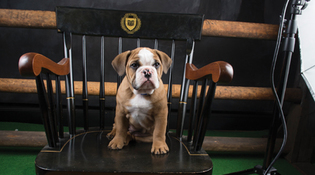 Mark OstowWalter, aka Handsome Dan XVIII, posed for this photo, the one below, and the one on our cover when he was 11 weeks old. They were taken at Ray Tompkins House, home of the athletics department, in front of the section of the Yale fence where team captains get their official photos taken. View full imageIt's not easy managing a celebrity. Kevin Discepolo ’09, an assistant athletics director at Yale, knows all about it. He is caretaker, human companion, and alpha dog to Walter—a puppy who, in November, took office as Handsome Dan XVIII. “December was overwhelming,” Discepolo says, while Yale’s official mascot, lying under a chair nearby, snores gently. “I got five to ten e-mails per hour asking about the dog. We did everything from photo shoots to study breaks to holiday parties.” Walter’s popularity is in part a function of the Internet, where dog and cat pictures abound. Walter has thousands of followers on Instagram (@handsomedanxviii) who swoon at Discepolo’s pictures of him playing in the snow, sitting in Sterling Memorial Library, or—back in his tiniest days—peeking out from inside a silver trophy cup at Mory’s. “A lot of the comments say things like ‘I’m definitely choosing Yale because of this dog,’” Discepolo said. From the beginning in 1892, Handsome Dan has been a symbol and a public relations tool for Yale, but the dog’s role and meaning have changed over the decades. The first Dan, a purebred champion bulldog owned by Andrew Graves ’92S, a Yale rower, was the prototype for team mascots and team nicknames everywhere. (It was Dan who inspired the Yale teams to call themselves Bulldogs, not the other way around.) Dan I was a symbol of toughness, strength, and tenacity in Yale sports—celebrated for his ferocity, not his adorability. “He was always taken to games in a leash,” the Hartford Courant wrote in a tribute after his death, “and the Harvard foot ball team for years owed its continuing existence to the fact that the rope held.” Like Hollywood press agents, Yale storytellers even invented a backstory for Dan, disguising his blue-blooded origins with a claim that Graves had found the scrappy dog covered in soot in a New Haven blacksmith’s shop. For decades after he died, Dan I remained just Dan—the one and only Yale bulldog. Then, in 1933, the Class of 1937 bought a bulldog and christened him Handsome Dan II. The title has been bestowed upon 16 more bulldogs since then. As with all royal lines, their reigns have varied greatly in length and success, and they have had any number of exploits. Handsome Dan II and Handsome Dan XII were victims of sensational kidnappings by students at Harvard and Princeton, respectively. Handsome Dan IX fell off the dock at Derby and had to be saved from drowning. Handsome Dan X sired a litter of celebrity puppies. But until recently the Dans’ realm was limited mostly to the athletic fields. That began to change in the 1980s, when Christopher Getman ’64 became the owner and caretaker of Handsome Dan XIII, whose given name was Maurice. For a New Haven school benefit, Getman had the idea to auction off the right to walk Maurice at the next Harvard football game. The winner offered $1,500—and Getman knew “we were on to something.” Maurice “got asked to be at art openings and other non-athletic events,” he says. “The more the dog was out in the public, the more he was in demand.” 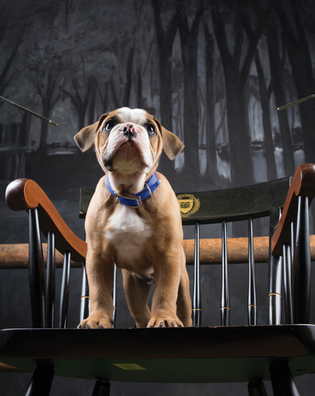 Mark OstowView full imageGetman cared for three of the next four Handsome Dans, ending with Sherman, who died last summer. The dogs attended nearly every commencement (Sherman once wore a video camera for a Dan’s-eye view), posed for pictures with thousands of people, and met US presidents and other celebrities. In the same period, official Yale turned to Handsome Dan to leaven its traditionally lofty self-image. The undergraduate admissions materials, which had tended to emphasize Yale’s superior scholarship and clubby milieu, began sporting fun bulldog images. (Since 2002, admitted students have been greeted on the admissions website by Handsome Dan lip-synching to a Whiffenpoof recording of Cole Porter’s “Bulldog.”) When the university expanded its shuttle bus service throughout New Haven in the 2000s, large bulldog decals made the buses more visible. Today, Dan is a symbol of all of Yale: showing up at the School of Management as well as the Bowl, retweeted as often by divinity students as by cheerleaders. He is a unifying figure for the university’s schools. You might even compare his role at Yale to that of Queen Elizabeth II for the British Commonwealth. (If you think that’s a bit much, we won’t mention the East Asian languages professor who proposed that, as with the Dalai Lama, “in every generation there is the obligation to find in which canine body Handsome Dan has incarnated himself.”) To become an ambassador, not just an avatar of athletic ferocity, Handsome Dan had to become a kinder, gentler bulldog. The recent holders of the title have been just that—in part because of their upbringing, but also because Yale’s preferred breed, the English bulldog, had been bred over the years to be more docile and less athletic. Unfortunately, those weren’t the only changes. Breeders aiming for that iconically flat, jowly bulldog face, so ugly that it’s cute, have created an animal with persistent health problems. Getman says that three of his four dogs had to have their throats surgically stretched so they could breathe properly. They also had to have lots of dental work, and some of them even had trouble swallowing food. “What’s happening to these dogs is criminal,” he says. 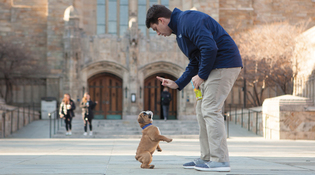 MuttographyWalter lives in Guilford with assistant athletics director Kevin Discepolo ’09. Discepolo brings the dog to work with him every day, making Walter the most paws-on Yale mascot in decades. View full imageHaving loved the dogs for years while seeing their infirmities up close, Getman advised Yale to consider a different breed. The athletics department consulted with dog experts—including psychology professor Laurie Santos, who runs Yale’s Canine Cognition Center—and considered several bulldog varieties. Eventually, the department settled on a dog with the quaintly spelled name of Olde English Bulldogge. This relatively new breed—a mix of English bulldog, American bulldog, mastiff, and pit bull—is billed as a “reconstruction” of the original English bulldog of the seventeenth and eighteenth centuries. It has the traditional wrinkled, pugnacious-looking face, thick chest, and wide forelegs. But it also has a protruding snout (with clear airways) and a healthy muscularity. Kevin Discepolo is keeping that last feature in mind as Walter grows and begins his obedience training. “Since he will be bigger and more athletic,” he says, “we want him to be well behaved.” This is the twenty-first century, after all. In this day and age, we shouldn’t have to fear for the safety of the Harvard team, even if the leash doesn’t hold. Here are brief biographies of all 17 previous Handsome Dans—with photos, whenever we could find them. 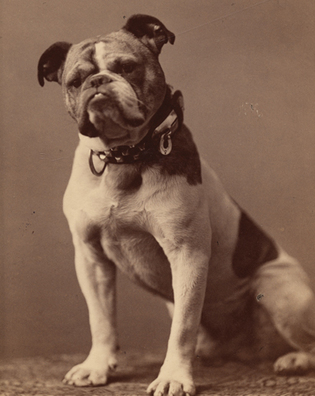 Manuscripts and ArchivesHandsome Dan I View full imageHandsome Dan I (1892–97) 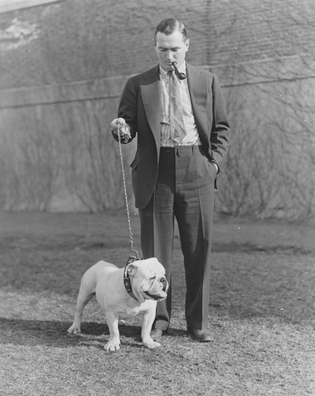 Manuscripts and ArchivesHandsome Dan II View full imageHandsome Dan II (1933–37) Handsome Dan III (1937–38) 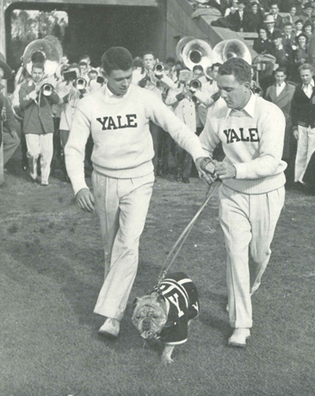 Yale Alumni MagazineHandsome Dan IV View full imageHandsome Dan IV (1938–40) 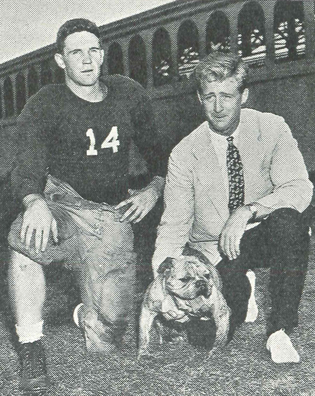 Yale Alumni MagazineHandsome Dan V View full imageHandsome Dan V (1940–46) Handsome Dan VI (1946–49) 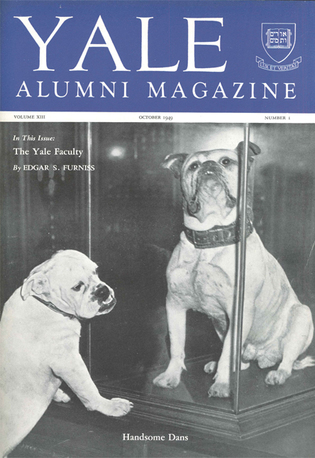 Yale Alumni MagazineHandsome Dan VII View full imageHandsome Dan VII (1949–52) Handsome Dan VIII (1952–53) 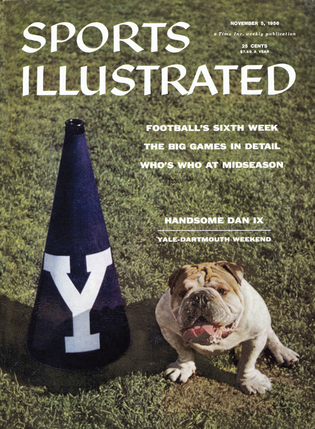 Sports IllustratedHandsome Dan IX View full imageHandsome Dan IX (1953–59) 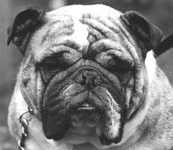 Yale AthleticsHandsome Dan X View full imageHandsome Dan X (1959–69) 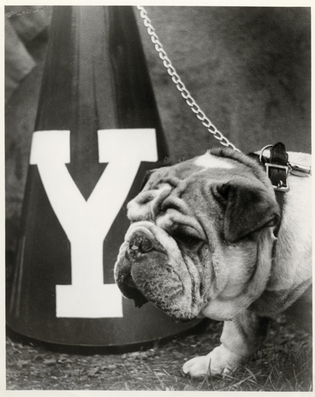 Manuscripts and ArchivesHandsome Dan XI View full imageHandsome Dan XI (1969–74) 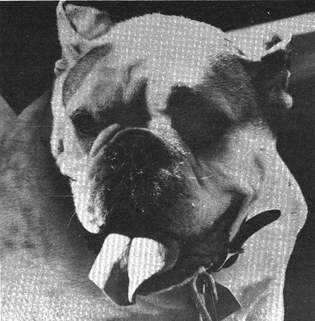 Yale Daily NewsHandsome Dan XII View full imageHandsome Dan XII (1975–1983) 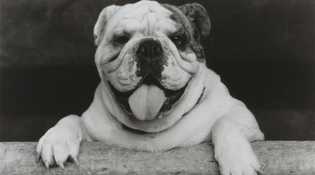 Yale AthleticsHandsome Dan XIII View full imageHandsome Dan XIII (1984–95, 1996) 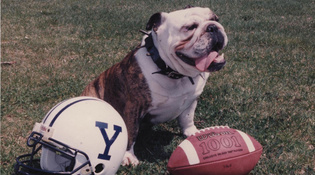 Yale AthleticsHandsome Dan XIV View full imageHandsome Dan XIV (1995–96) 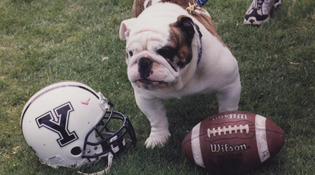 Yale AthleticsHandsome Dan XV View full imageHandsome Dan XV (1996–2005) 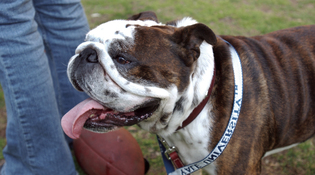 Yale Alumni MagazineHandsome Dan XVI View full imageHandsome Dan XVI (2005–07) 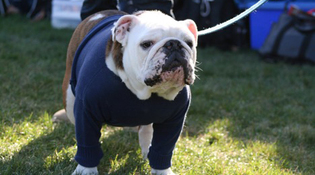 Yale AthleticsHandsome Dan XVII View full imageHandsome Dan XVII (2007–2016)
The comment period has expired.
|
|